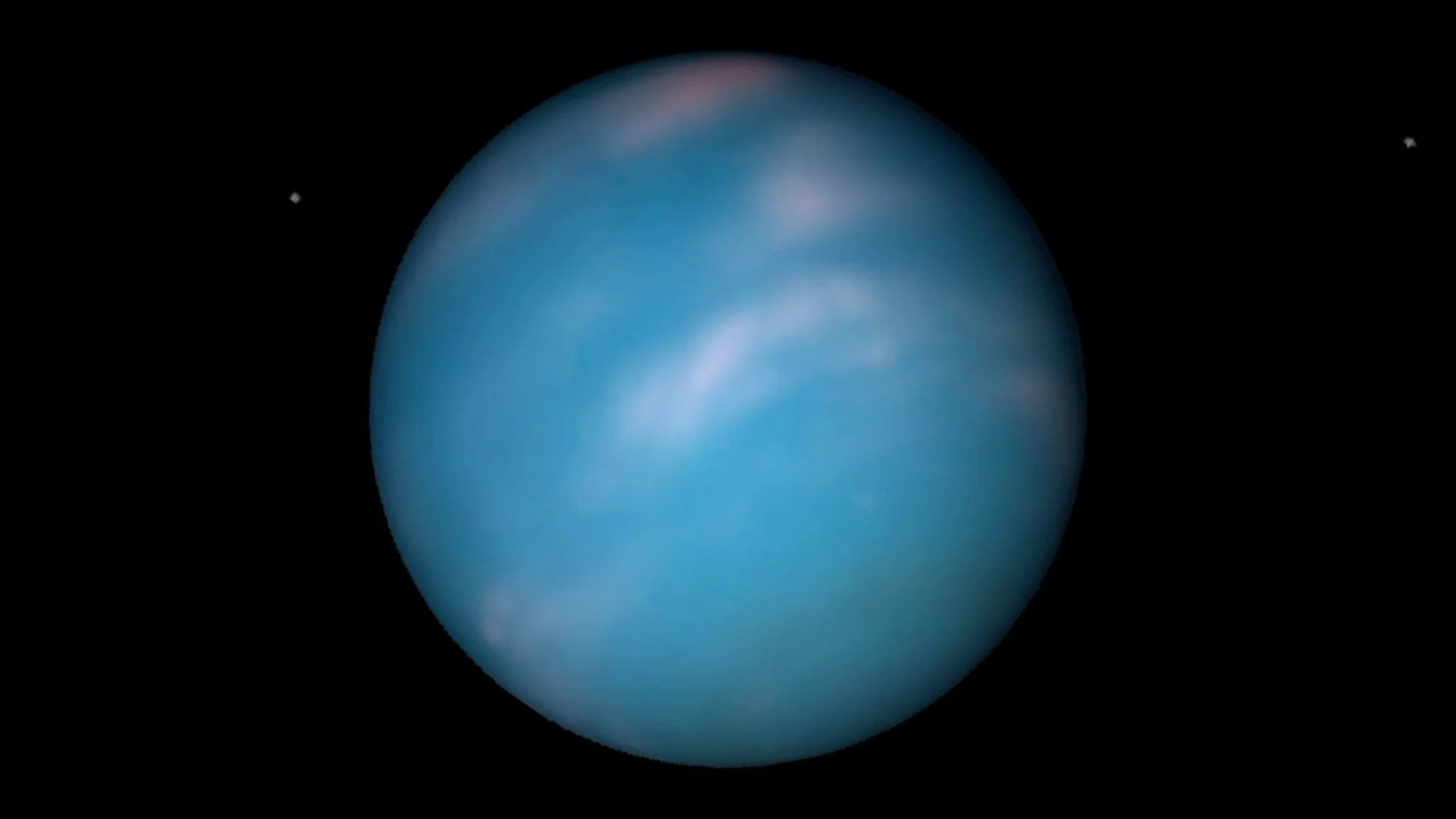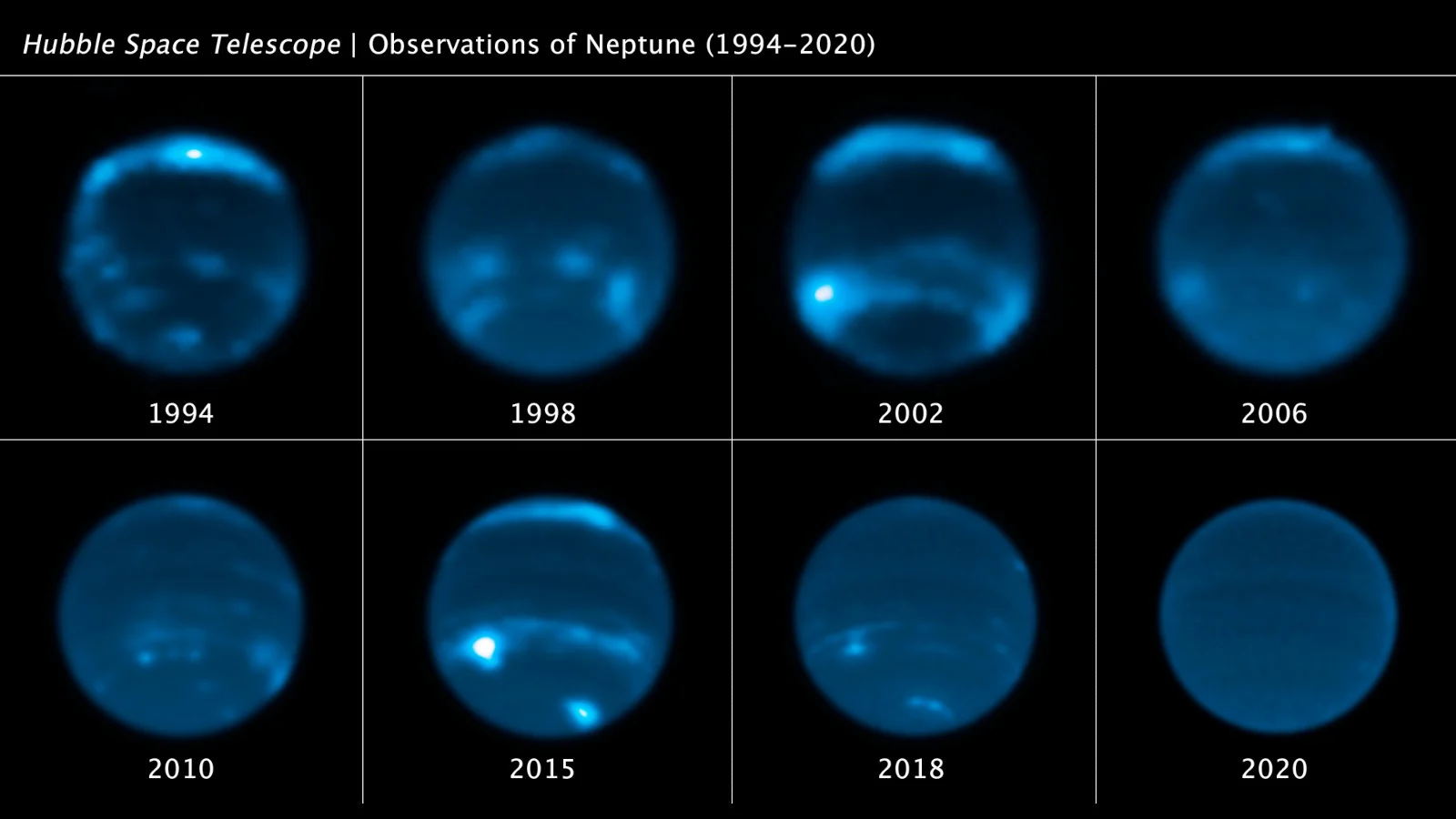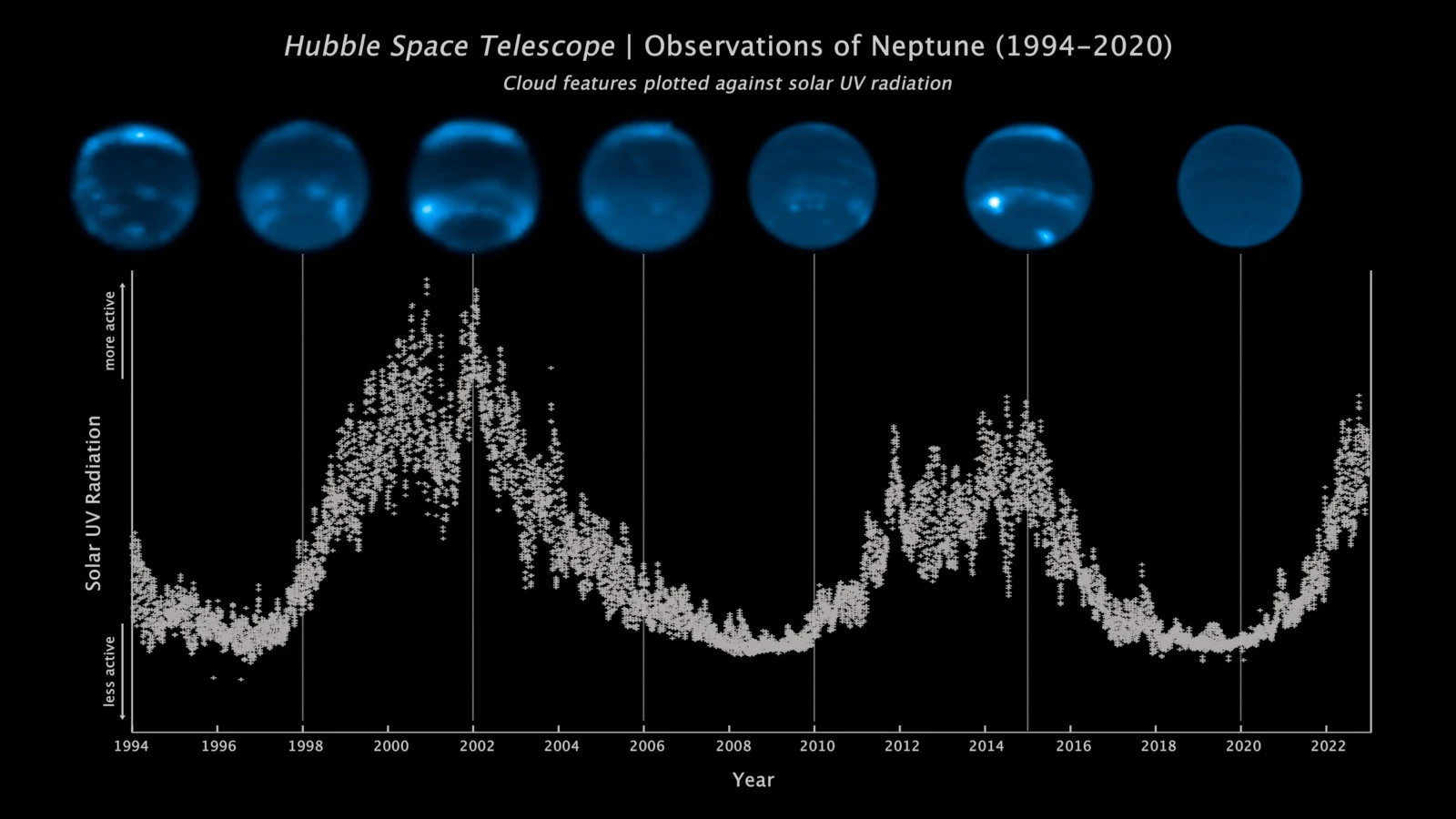
Space weather spawns bright clouds in Neptune's atmosphere
Astronomers discovered a surprising connection between bright clouds on this distance ice giant and the Sun's 11-year solar cycle.
A team of astronomers has discovered something extraordinary about the bright clouds that periodically show up in Neptune's upper atmosphere — they appear to be linked to the Sun's 11-year cycle of increasing and decreasing sunspots and solar flares.
The eighth planet from the Sun is a bit of an oddball. Although Neptune is the farthest major planet in the solar system and receives only a minuscule fraction of the solar energy we get here on Earth (around 0.1 per cent), it appears strangely tied to the Sun.
This relationship between Neptune and the Sun was discovered as astronomers noticed that as the last solar cycle ramped down into 2019 and a new solar cycle began in 2020, the bright clouds in the ice giant's upper atmosphere were disappearing.

This sequence of Hubble Space Telescope images shows the changing methane clouds on Neptune from 1194 to 2020. Credits: NASA, ESA, Erandi Chavez (UC Berkeley), Imke de Pater (UC Berkeley)
Looking for a possible reason for this pattern, the team noticed that the amount and brightness of the clouds tended to peak just after solar activity reached a maximum, and the clouds almost completely disappeared just after a solar cycle ended.
"These remarkable data give us the strongest evidence yet that Neptune's cloud cover correlates with the Sun's cycle," Imke de Pater, a senior author of the study who is an emeritus professor of astronomy at UC Berkeley, told NASA. "Our findings support the theory that the Sun's UV rays, when strong enough, may be triggering a photochemical reaction that produces Neptune's clouds."
--
DON'T MISS: Scientists have figured out what a twinkling star sounds like - listen here
--

This sequence compares Hubble Space Telescope images of the waxing and waning of cloud cover on Neptune with the Sun's 11-year cycle from 1994 to 2022. Credits: NASA, ESA, LASP, Erandi Chavez (UC Berkeley), Imke de Pater (UC Berkeley)
According to NASA:
Scientists discovered the connection between the solar cycle and Neptune's cloudy weather pattern by looking at 2.5 cycles of cloud activity recorded over the 29-year span of Neptunian observations. During this time, the planet's reflectivity increased in 2002 then dimmed in 2007. Neptune became bright again in 2015, then darkened in 2020 to the lowest level ever observed, which is when most of the clouds went away. The changes in Neptune's brightness caused by the Sun appear to go up and down relatively in sync with the coming and going of clouds on the planet. However, there is a two-year time lag between the peak of the solar cycle and the abundance of clouds seen on Neptune. The chemical changes are caused by photochemistry, which happens high in Neptune's upper atmosphere and takes time to form clouds.
"It's fascinating to be able to use telescopes on Earth to study the climate of a world more than 2.5 billion miles away from us," Keck Observatory astronomer Carlos Alvarez, who co-authored the study, said in the NASA press release. "Advances in technology and observations have enabled us to constrain Neptune's atmospheric models, which are key to understanding the correlation between the ice giant's climate and the solar cycle."
(Thumbnail image courtesy NASA)










